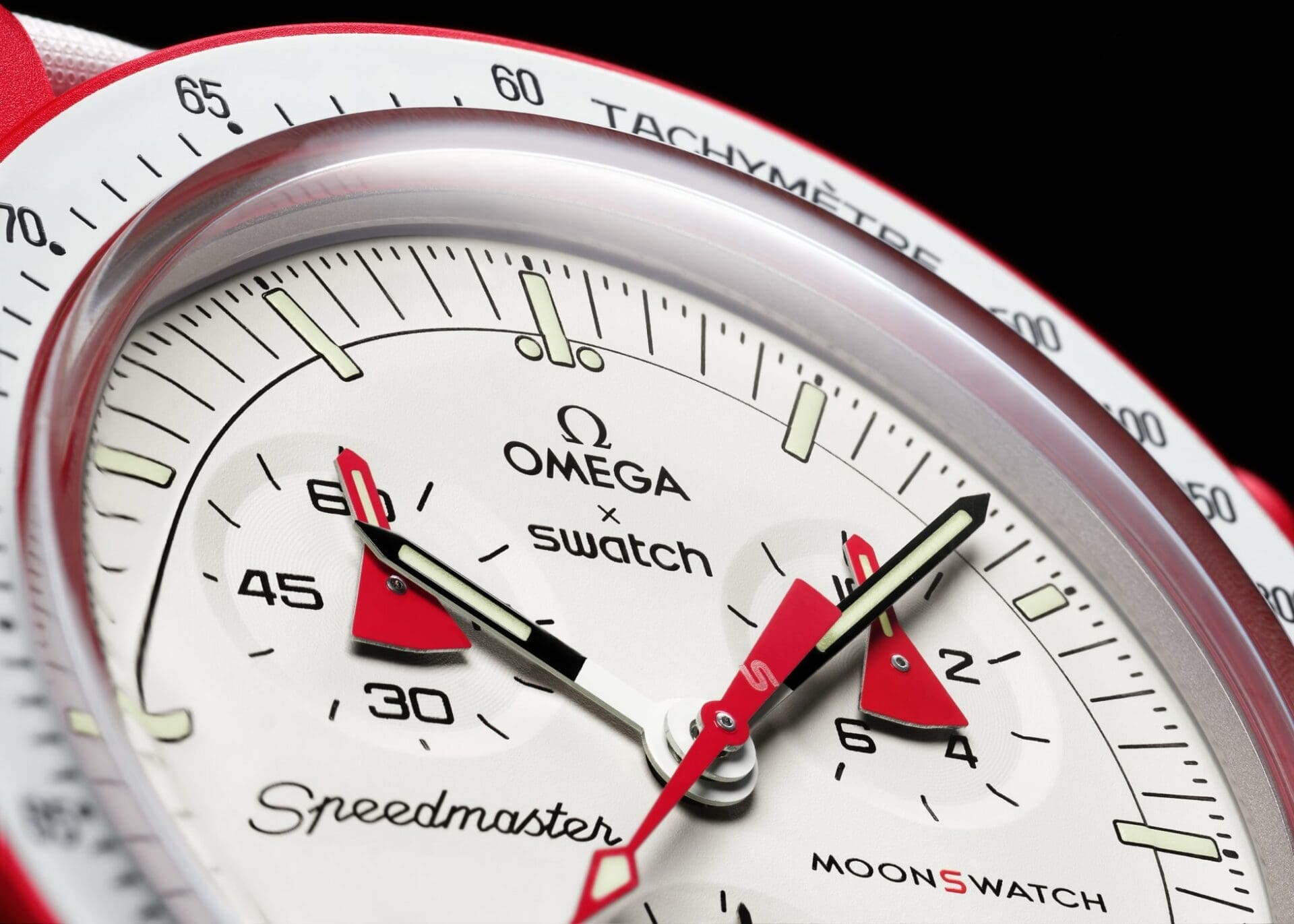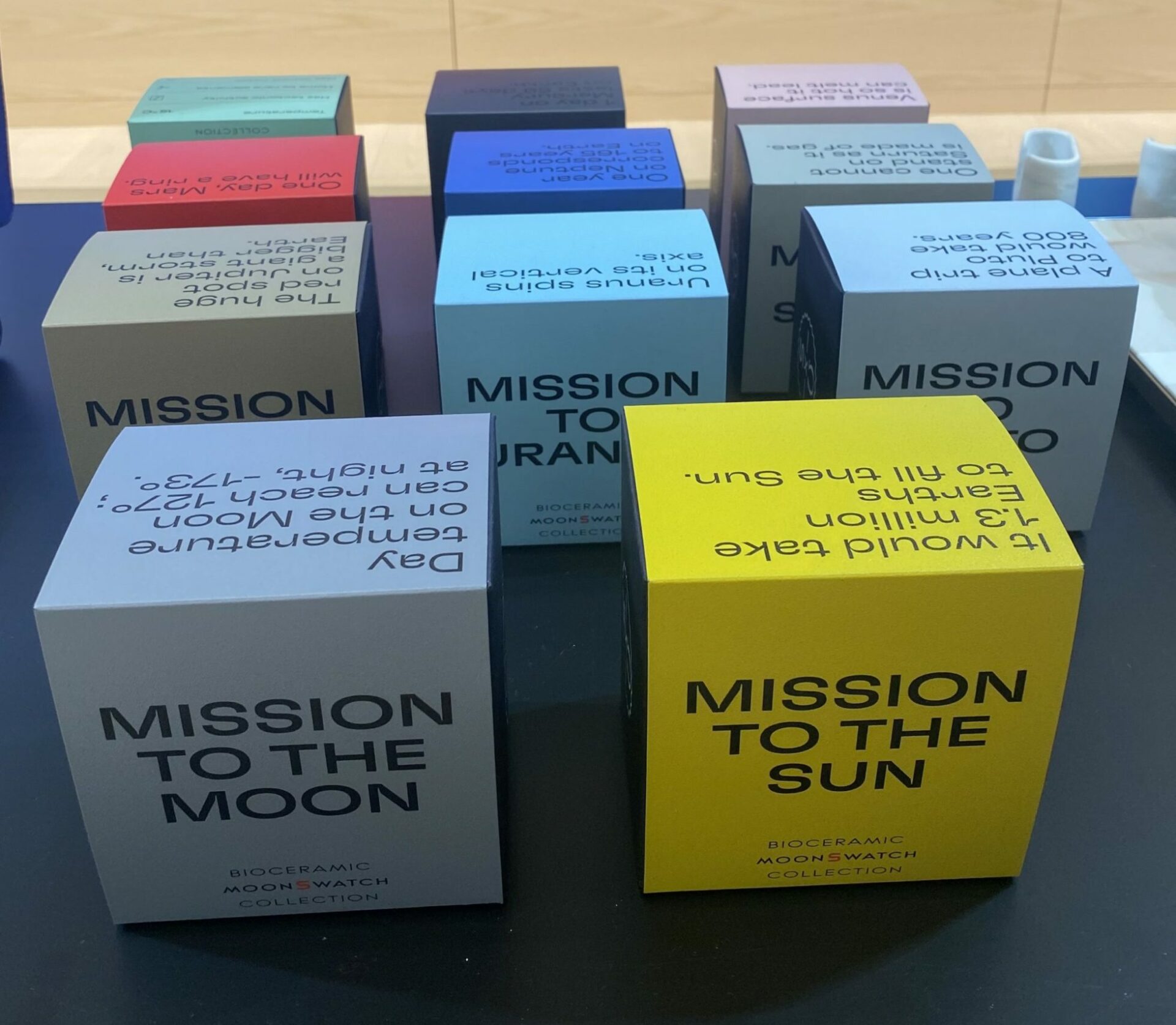Marketing guru explains why the MoonSwatch was a genius co-branding move
Luke BenedictusLast week at Watches & Wonders, I suspect that the watch that was discussed most regularly and with most animation wasn’t even released at the show. Countless times over dinners or drinks, I heard the subject of the MoonSwatch pop up and everyone had an opinion on the shock collaboration between Omega and Swatch. Some expressed incredulity at the queues that snaked around the block outside Swatch boutiques all over the world. Some believed the whole thing was a tawdry marketing stunt that cheapens Omega’s iconic Moon Watch. Others just really wanted the Mission to Mars version due to those “Alaska Project” hands.
But now the initial tidal wave of hype has subsided (a little), this article from Marketing Week from Dr Mark Ritson offers an informed opinion. As a brand consultant and former marketing professor – who also just so happens to have worked for a top Swiss watch brand – Dr Ritson has an intriguing perspective on whether this unique collab was really a good move or a massive blunder.
“Scarcity might be the reason that most of the Moonswatches are now on sale on Ebay for 10 times the price they were purchased for on Saturday,” Dr Ritson writes. “But perhaps the premium is also being driven by an efficient market recognising the true value of a ridiculously under-priced product.”
Ritson goes on to unpack why this is such an unusual co-branding move due to the fact that both Swatch and Omega make watches and would indeed be competitors if they didn’t both belong to the Swatch Group. The fact that the Moonswatch doesn’t appear to be a limited edition makes the proposition more complex, he suggests. Sure it promises to be a tremendous success for Swatch, but some think the fact that it costs a fraction of the price means that it could also diminish the appeal of Omega’s considerably more expensive offering. Yet Dr Ritson believes that talk of any collateral damage for either brand is off-beam.
“I am minded of something Les Binet and Sarah Carter once wrote in their wonderful book How Not to Plan,” he says. “The two experienced advertisers noted that despite all the criticisms of ‘bad advertising’, neither had ever observed a single incidence of an ad being so bad it was bad for business. Not one.
“And as I grow older and less academic in my orientation, I find the same truth plays out across much of the branding space too. For all our pronouncements of mistaken strategies and flawed execution, very few brands are ever damaged by their innovations. In truth, I think most brand managers are far too conservative in their approach to the brands that they manage.”
The point about conservatism is particularly salient in an industry that can often feel morbidly traditional. Dr Ritman also argues that predictions of the MoonSwatch cannibalising Omega’s hard-won gains fail to recognise the disparity of the products.
Dr Ritman quotes Omega CEO Raynald Aeschlimann on this subject. “I’m aware there will be critics,” the Omega boss says. “But there is a vast space between a genuine Speedmaster Moonwatch and this Swatch. There is really no crossover in any true sense, apart from the look. Yes, there is a model in black and perhaps it could pass as the real thing in certain light, but it is in bio-ceramic, which makes it unique, different. It’s important to keep it in perspective. It’s a fun project and adds some light to an industry that can take itself too seriously.”
Dr Ritman agrees with this perspective. “Aside from the several million euros of revenue generated over the weekend, consider the other benefits bestowed by the new model. Swatch has just generated enormous salience, traffic, editorial and a welcome boost of premiumness thanks to its proximity to Omega. Swatch makes incredibly good-value, long-lasting, fun watches and not enough people know that. A few more people out on the street or reading the paper or this article are now aware of it.
“Meanwhile, Omega has successfully reminded everyone about the Speedmaster and its link to the stars and those amazing events of many years ago,” he continues. “Too many black-and-white photos of dead astronauts and ancient spaceships can make your brand incredibly dusty. The coverage this weekend was in colour and of the moment.”








